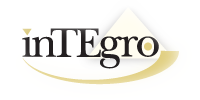Change Reflections Al Watts It’s been a challenging year, mainly in good ways. Beyond 2017’s general challenges that we’ve likely all encountered, my wife and I have been managing the move from our home of 25 years. I couldn’t help capturing some parallels and lessons from that experience as they apply to navigating life, work and organizational change:
There has been one more lesson learned from our moving experience. That is the opportunities for learning about leadership and life that any experience away from the usual can offer. In past newsletters I’ve shared lessons learned from sailing, camping in the Boundary Waters, travels and more; if we’re paying attention we can learn from almost any experience. I hope these reflections on our move prove useful for you, and encourage you to capture useful lessons from your own life experiences. Life is about change. Sometimes it’s painful Sometimes it’s beautiful But most of the time, It’s both. (Lana Lang) Image credits: Corporate Compliance Insights, juxtapost, Lisa Stoops, Forbes |






 next. While we didn’t agree on everything, we ended up with a better plan and shared ownership of the plan. Not all, in fact very few, organizational changes can be democratic; however change leaders, managers and their organizations stand to benefit by broadening input on change plans.
next. While we didn’t agree on everything, we ended up with a better plan and shared ownership of the plan. Not all, in fact very few, organizational changes can be democratic; however change leaders, managers and their organizations stand to benefit by broadening input on change plans. “head” can sometimes be paying attention to rational reasons for changing while our “heart” isn’t there yet. Despite plans and up-front investments of time, emotional energy and money, there was a point in our process where we could have “lost heart,” tempted to reverse course. In 1519 Hernan Cortes burned his fleet’s ships to secure the commitment of his fellow Conquistadors. While not as dramatic, signing an apartment lease made it less likely that our plans would be hijacked by second guessing or half heartedness. “Forward” became our mantra.
“head” can sometimes be paying attention to rational reasons for changing while our “heart” isn’t there yet. Despite plans and up-front investments of time, emotional energy and money, there was a point in our process where we could have “lost heart,” tempted to reverse course. In 1519 Hernan Cortes burned his fleet’s ships to secure the commitment of his fellow Conquistadors. While not as dramatic, signing an apartment lease made it less likely that our plans would be hijacked by second guessing or half heartedness. “Forward” became our mantra. (Although like organizational change would have taken much longer without adequate planning and preparation.) The transition process, however, is ongoing. Bridges described three stages of transition, beginning with “Endings,” ending with “New Beginnings” and the “Neutral Zone” in between. We need to fully let go of “what was” in the Endings phase of transition before we can advance toward the “what will be” of New Beginnings. The Neutral Zone is like the space between trapezes; we’ve let go of what was, but haven’t fully grabbed hold of what’s next. My wife and I are still in the Neutral Zone of our transition, marked by awkwardness around things like where items are located and new routines, occasional psychological tugs of what used to be, and needs to reassure ourselves. It’s been helpful to know that some awkwardness, confusion and uncertainties between the old and new are normal.
(Although like organizational change would have taken much longer without adequate planning and preparation.) The transition process, however, is ongoing. Bridges described three stages of transition, beginning with “Endings,” ending with “New Beginnings” and the “Neutral Zone” in between. We need to fully let go of “what was” in the Endings phase of transition before we can advance toward the “what will be” of New Beginnings. The Neutral Zone is like the space between trapezes; we’ve let go of what was, but haven’t fully grabbed hold of what’s next. My wife and I are still in the Neutral Zone of our transition, marked by awkwardness around things like where items are located and new routines, occasional psychological tugs of what used to be, and needs to reassure ourselves. It’s been helpful to know that some awkwardness, confusion and uncertainties between the old and new are normal. values, capacities and commitments to one another as before. I’ve counseled my clients that as they plan what to change, it is equally important to be clear about what will not change, and to reinforce their core purpose, goals and values. To use another of my favorite sailing analogies, while much changes on deck and around a sailing vessel underway, its keel is solid and unchanged. The keel is what keeps a sailboat upright and generally headed in the right direction, even in storms; our core purpose, principles and priorities are our keel.
values, capacities and commitments to one another as before. I’ve counseled my clients that as they plan what to change, it is equally important to be clear about what will not change, and to reinforce their core purpose, goals and values. To use another of my favorite sailing analogies, while much changes on deck and around a sailing vessel underway, its keel is solid and unchanged. The keel is what keeps a sailboat upright and generally headed in the right direction, even in storms; our core purpose, principles and priorities are our keel.